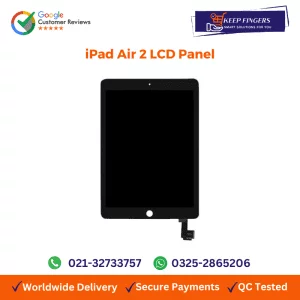In today’s fast-paced world, mobile phones have become an integral part of our daily lives. Whether we use them for communication, entertainment, or work, one thing is clear: the responsiveness of mobile screens plays a crucial role in our overall user experience. Have you ever wondered how your smartphone’s screen detects your touch and responds instantly? That’s where touch glass technologies come into play, and in this article, we’ll delve into the science behind responsive mobile screens.
Understanding the Basics of Touch Glass Technologies
When you tap, swipe, or pinch on your mobile screen, you’re essentially interacting with a touch-sensitive surface called a touchscreen. Touchscreens have revolutionized the way we interact with electronic devices, and they come in various types, with capacitive touchscreens being the most common in modern smartphones.
Capacitive Touchscreens: How Do They Work?
Capacitive touchscreens work on the principle of capacitance. Here’s a simplified explanation: when you touch the screen, it disrupts the electromagnetic field that is constantly present on the surface. This disturbance is detected by the screen’s sensors, which then pinpoint the exact location of the touch. The result? A swift and precise response to your touch, be it scrolling through social media, playing games, or typing out a text message.
Types of Capacitive Touchscreens
- Surface Capacitive: This type of touchscreen is commonly found in kiosks and public information systems. It relies on a protective layer that covers the screen’s surface, making it durable and resistant to contaminants.
- Projected Capacitive (P-Cap): P-Cap touchscreens are what you’ll typically find in smartphones and tablets. They offer multi-touch support, allowing you to use gestures like pinch-to-zoom and swipe.
- In-Cell and On-Cell: These are variations of capacitive touchscreens integrated into the display itself. They are thinner and offer better optical quality but can be more expensive to replace if damaged.
The Importance of Touch Glass Quality
While the science behind capacitive touchscreens is fascinating, the quality of the touch glass itself is equally critical. Inexpensive or poorly manufactured touch glass can lead to issues like false touches, unresponsiveness, or even scratches. It’s essential to invest in a mobile device with high-quality touch glass to ensure a seamless user experience.
LSI Optimized Technologies for Enhanced Responsiveness
Local Search Indexing (LSI) optimization isn’t just about keywords; it’s also about staying updated with the latest advancements in touch glass technology. Manufacturers are continually improving touchscreens to provide users with more responsive and immersive experiences. In recent years, LSI-optimized features have led to:
- Faster Response Times: LSI optimization has enabled touchscreens to respond even more swiftly to your gestures, making your interactions with your mobile device feel more natural.
- Improved Touch Accuracy: Advanced LSI-optimized touchscreens can distinguish between intentional touches and accidental brushes, reducing errors in your interactions.
- Enhanced Multi-Touch Support: LSI-optimized touchscreens can support a wider range of multi-touch gestures, allowing you to perform complex actions with ease.
touch glass technologies have come a long way in making our mobile devices more responsive and user-friendly. Understanding how capacitive touchscreens work and the importance of touch glass quality can help you make informed choices when it comes to purchasing a smartphone or tablet. Additionally, staying updated with LSI-optimized advancements in touch glass technologies will ensure that you continue to enjoy a seamless and responsive user experience with your mobile device.
In Pakistan, where the use of mobile devices is widespread, being aware of the science behind touch glass technologies is more important than ever. By appreciating the intricacies of these technologies, you can make informed decisions and fully appreciate the convenience and functionality of your responsive mobile screen. So, the next time you send a message, play a game, or browse the web on your smartphone, remember the remarkable science that enables your device to respond to your every touch.


